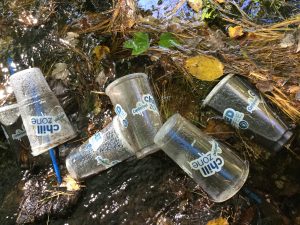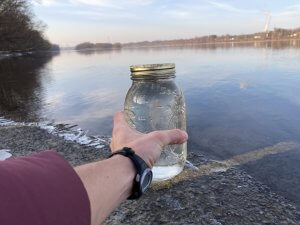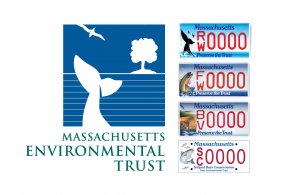
Plastic trash breaks down into microplastic over time and plastic fibers may come from clothes or beauty products.

Nurdles, like these pictured, are a base material used to produce plastic products. They can wash into waterways from manufacturing plants.

Are microplastics present in the Connecticut River?
We’ll know soon.
Thanks to Massachusetts Environmental Trust, Conservation Law Foundation, and Ocean Conservancy for their support of this work.
What are Microplastics?
There has been growing concern about plastics (including microplastics) in aquatic environments. Trash found in rivers, lakes, and oceans ranges in size from giant floating trash barges to microbeads and glitter. While our Source to Sea Cleanup event and trash advocacy program focuses on these larger trash items, microplastics also play a role in contributing to the pollution in our rivers.
Microplastics are defined as small particles of plastic from the degradation of larger items such as Styrofoam, plastic bags, bottles, wrappers, synthetic textiles, synthetic rubber, etc. Microplastics are plastic particles less than 5 mm in diameter (a half-centimeter). Microplastics last for hundreds of years, accumulate in the food chain, and are hard to clean up. CRC’s microplastic monitoring pilot program will help determine if, and in what quantities, these microplastics are present in the Connecticut River watershed to guide efforts at reducing this pollution.
Monitoring for Microplastic
In Spring of 2021 CRC launched a pilot microplastic monitoring program. While most of the 2021 samples (sites listed below) are in MA along the Connecticut River main stem, samples are also collected in all four states and along some of the Connecticut River tributaries to gain a more accurate idea of microplastic distribution across the watershed. In future years we will continue to expand this effort.
Sample Collection
Samples are collected as one-liter in-stream grab samples. Collected three times a year per site, volunteers will return to their sites over the course of 2021 and return the samples to the CRC Laboratory in Greenfield, MA. At the lab, staff and volunteers will use a vacuum pump and filter to separate the water and particulates. Using a microscope for analysis, we aim to determine relative abundance and establish presence vs. absence of microplastics.
Sample Locations
- VT/NH – Putney Rowing Club, Putney, VT – Connecticut River
- VT/NH – West River Marina, Brattleboro, VT – West River
- MA – Pauchaug Ramps, Northfield, MA – Connecticut River
- MA – Heath State Forest, Heath, MA – West Branch North River
- MA – Barton Cove, Gill, MA – Connecticut River
- MA – DA Ramp, Deerfield, MA – Deerfield River
- MA – Sunderland Ramp, Sunderland, MA – Connecticut River
- MA – Brunelles Marina , South Hadley, MA – Connecticut River
- MA – Jones Ferry, Holyoke, MA – Connecticut River
- MA – Pynchon Point, Agawam, MA – Westfield River
- MA – Pioneer Valley Yacht Club, Longmeadow, MA – Connecticut River
- CT – Riverfront Park Dock, East Hartford, CT – Connecticut River
- CT – Haddam Ramp, Haddam, CT – Connecticut River
Get Involved: Email volunteer@ctriver.org if you are interested in volunteering!


